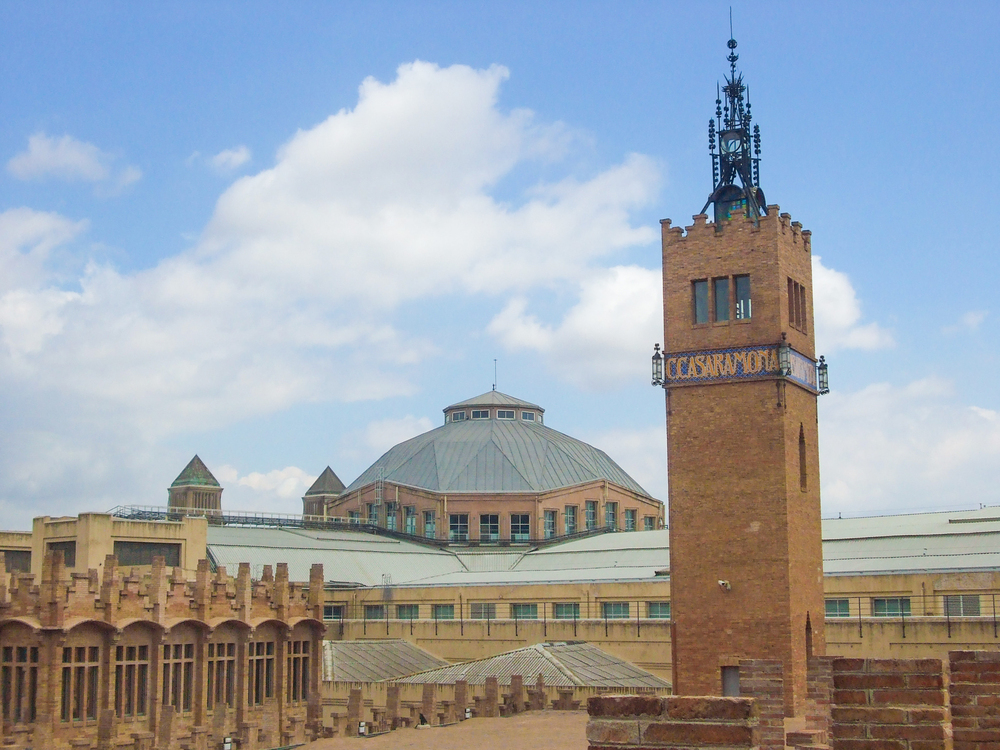
Image courtesy of Inma Santos (metropoliabierta.elespanol.com), all rights reserved.
Barcelona, the Spanish city of Barcelona, is home to a number of representative buildings that are in a state of abandonment or in the process of rehabilitation, impatient to receive a new purpose. These structures, with rich pasts, remain empty, but with assigned projects that promise to revitalize their past splendor.
Barcelona reinforces the security of its buildings against the threat of squatter organizations
A tour of some representative buildings of Barcelona
1. Casa de la Prensa (Rius i Taulet Ave.)
The Press House was erected to house the journalists who covered the 1929 International Exposition. Designed by Pere Domènech i Roure, son of Lluís Domènech i Montaner, the house was equipped with state-of-the-art technology of the time. After serving as the headquarters of the Guardia Urbana until the 1980s, it has remained empty. It is planned to be transformed into a library and other multi-purpose spaces, with the ambition to be ready for the exhibition’s centennial in 2029.
2. Representative buildings: Borsí (Plaça de la Verónica, 2, Ciutat Vella, 08002 Barcelona)
The neoclassical building known as Borsí, in the Plaza de la Verónica, was built between 1881 and 1883 to house the Casino Mercantil. After operating as a venue for stock exchange sessions and later as a school of Fine Arts, it was vacated in 2009 due to its deterioration. Currently undergoing rehabilitation, the first phase is expected to be completed in April 2025, transforming it into a library and various community spaces.
3. Castell dels Tres Dragons (Passeig de Picasso, s/n, 08003)
The Castell dels Tres Dragons, designed by Lluís Domènech i Montaner in the Ciutadella Park, was the café-restaurant of the Universal Exposition of 1888. Over the years, it has changed its function from a history museum to a zoology museum, and today, it is only open to researchers. Currently, a new project is being worked on to give it a renewed and significant use.
4. The Montjuïc Lighthouse (Parc de Montjuïc, Sants-Montjuïc, 08038)
Built in 1922 to replace its 1906 predecessor, the Montjuïc Lighthouse continues its automatic function from the mountainside. Abandoned since the last lighthouse keeper left the building in 2000, attempts to convert it into a meeting center were halted by environmental protests. The work was left unfinished, but one room offers panoramic views of the port through large windows.
La Casa de les Punxes: one of the most characteristic modernist buildings in Barcelona.
5. Representative buildings: Capella de la Misericòrdia (Carrer d’Elisabets, 8-10, Ciutat Vella, 08001)
Closed and with structural problems, the Capella de la Misericòrdia on Montalegre street awaits its time to house the extension of the Raval ambulatory. Built in 1887 as the second chapel of the Casa de la Misericordia, it is accessed through an inner courtyard known as Pati dels Tarongers. Although currently closed to the public, its wait holds the promise of a new purpose and service to the community in the future.
These representative buildings with their rich histories and distinctive architectures represent a cultural treasure for Barcelona, waiting to be rediscovered and enjoyed for generations to come.



